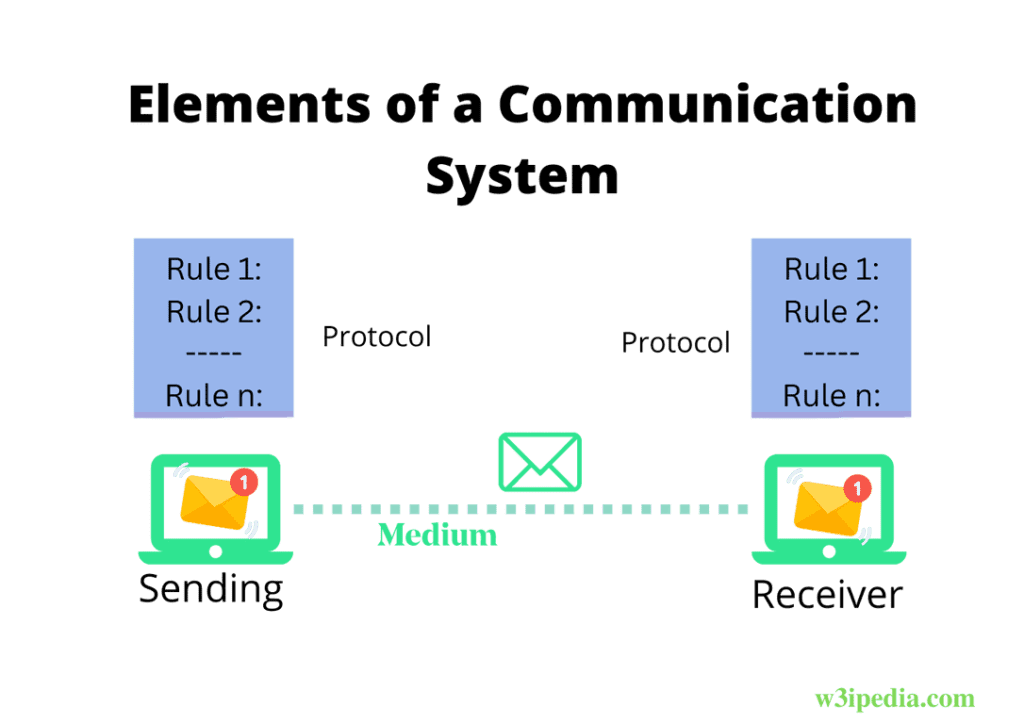Data communication refers to exchanging messages between sending and receiving devices through some communication medium. These messages contain information that can be shown in a variety of ways, including numbers, text and special characters, graphics (pictures, Figures, diagrams), audio files, and video files.
In the following section, we discuss the components involved in sending and receiving messages over a network.
Table of Contents
ToggleBasic Elements Of Communication System
Data is sent between two points through a communication system. Data transmission contains clearly defined processes that are carried out in a specific order. For example, if you want to send your picture from your computer or mobile phone to someone else, you need a communication system.
We’ll talk about the fundamental elements of a communication system below.

Message in a communication system
- Message= data or Collection of information to be communicated
- Message consist=text, of numbers, pictures, sound, videos, or any combination of these
Types of messages in a communication system
- File= Collection of Records or information
- Information request=web pages, database queries
- Response= requests, commands, or error message
- Control messages= Control traffic on the network
- Status messages= Status of network
- Correspondence= b/w network users
Sender in a communication system
A sender device is one that starts the process of communication. It transmits messages that include text (words, writing, letters ) numbers, images, and other data. Source and transmitter are other names for it. In modern communication systems, computers and smartphones are frequently used as senders of messages.
Receiver in a communication system
- Receiver= device/nodes/entity that receives a message. The receiver is also called a sink. The receiver can be a personal Computer Laptop, any other shape of computer, printer, or another device.
- The receiver should be fit for accepting a message.
- Generally, a television/ Computer is used as a receiver in a communication system.
Example:- Suppose you want to distribute your books of 8th Class to different Students and it is possible that the recipient of a book may write you a letter of thanks. You put a label on each book containing the destination address without any further instructions, as shown in the given figure.

In this scenario,
- the label serves as a header (also known as control information),
- the book is the payload (also called the message)
protocol in a communication system
- Protocol= set of rules and procedures for communication between a sender and a receiver.
- A Protocol is a formal agreement between two parties.
- Agreement between communication nodes/devices
- Without a protocol, two devices can connect but cannot communicate because there are no rules.
For Example: – If two people in a country talk to each other, then it is necessary for them that their language should be the same. If there is no common language, we can say two people are connected but cannot communicate. The rules of communication between two persons are called protocols.
Transmission medium in a communication system
The transmission medium is the means by which information or a physical object is transferred from one location to another. In Computer terms, the medium is the physical path that connects a sender and a receiver.
- It is used to transmit data.
- The medium can be a
- copper wire,
- Fiber optic cable
- Microwaves
- Laser or radio waves
- It is also called a communication channel.
- The medium can be a
A node/device may use multiple channels at the same time. A mobile device linked to the internet, for instance, employs a voice channel for calling and a data channel, such as 4G/LTE, for using the internet’s services.